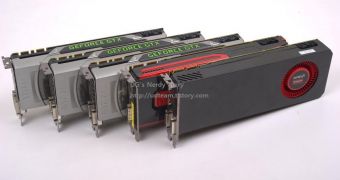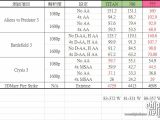We have previously learned some of the technical specifications of the flagship Volcanic Islands graphics processing unit from Advanced Micro Devices, but those were more on the physical side. Now we know how the R9-290X graphics card actually runs.
Quite well, it turns out. Assuming the Hawaii benchmarks posted by Chiphell aren't in any way biased (a common thing when NVIDIA and AMD post their own test results), we can safely say that the upcoming high-end video board is superior to NVIDIA's GeForce GTX Titan.
Not to say NVIDIA and AMD ever actually lie in their revelations. What they do, however, is post results for games that were optimized to work on their respective video controllers. Usually. It's why independent reviews get so much attention.
Anyway, according to Chiphell, the AMD Hawaii R9-290X GPU bested the GeForce GTX Titan in two out of three tests: Aliens vs. Predator 3, Battlefield 3 and Crysis 3. That last one is the only title where Titan did better, though not by overly much.
Some performance inconsistencies could be perceived, but those were owed more to the lack of drivers than anything else.
For those who want to know the specs of the Hawaii, the die boasts four Compute Units (CUs), each bringing 11 SMIDs. Thus, there are 44 SMIDs in total and, by extension, 2,816 stream processors. Definitely not a small number.
Add to that 176 Texture Mapping Units, 44 Raster Operators and 4 GB of GDDR5 working over a 512-bit interface (yes, we finally know this), and you have a winner, as the benchmarks clearly showed. 6 GB cards will be released soon after launch too (custom-made by OEMs). The RAM functions are 1020 – 1250 MHz (6120 – 7500 MHz effective, probably).
Moving on, the R9-290X benefits from a 5+1+1 phase design (5 Phase Core and 1 Phase memory), four display outputs (2 x DVI, one HDMI, one DisplayPort) and 8-Pin plus 6-Pin power connectors (possibly 2 x 8-pin on custom models, if the TDP goes above 300W).
All in all, we can see why the Hawaii R9-290X GPU would be, physically, 30% larger than Tahiti.

 14 DAY TRIAL //
14 DAY TRIAL // 
